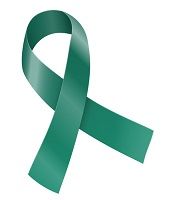Stem Cell Therapy for Myasthenia Gravis
Refractory cases of myasthenia gravis can be relieved by a new treatment based on replacing a patient’s immune system with new one created from transplants of his own stem cells, Canadian researchers report.

Refractory cases of myasthenia gravis (MG) can be relieved by a new treatment based on replacing a patient’s immune system with new one created from transplants of his own stem cells, according to a Canadian study published by JAMA Neurology.
This process, known as autologous Hematopoietic Stem Cell Transplantation (HSCT) can induce “….long-term, treatment-free MG control for patients with severe disease that has not responded to other treatments,” the authors wrote.
However, an editorial in the same issue of the journal expressed some skepticism about autologous HSCT becoming a common treatment given the expertise required to apply it and the risks involved, including death.
MG is an autoimmune disease “…caused by a defect in the transmission of nerve impulses to muscles. It occurs when normal communication between the nerve and muscle is interrupted at the neuromuscular junction—the place where nerve cells connect with the muscles they control,” the website for the National Institute of Neurological Disorders and Stroke (NINDS) explains.
Antibodies produced by the patient’s own immune system block or alter the transmission that causes the muscles to contract, the website adds.
The result can range from droopy eyelids to difficulty swallowing or breathing to severe fatigue from physical activity as well as other difficulties.
The roughly 10 percent of patients with generalized MG who are resistant to other current treatment could be candidates for autologous HSCT, the study said. MG affects about 36,000 to 60,000 people in the U.S. and possibly more because it frequently is under diagnosed, according to the Myasthenia Gravis Foundation of America.
Although autologous HSCT has been used to treat other immunological diseases, such as multiple sclerosis and stiff person syndrome, it has not been considered part of the arsenal of medical weapons against MG.
The most common current MG treatments include anticholinesterase drugs and off-label use of immunotherapeutic agents and drugs used for organ transplants or other autoimmune diseases.
The Canadian researchers from the University of Ottawa and Ottawa Hospital studied the autologous HSCT results from seven patients retrospectively and data from their follow-up for 2.5 to almost 13 years. They found that all of these patients did not need further MG treatment, that side effects such as post-treatment viral infections resolved or stabilized with treatment and that none of the patients died.
Compared with alternative therapies “responses of autologous HSCT were more consistent…and sustained…We postulate that autologous HSCT is sufficiently rigorous to eliminate autoreactivity and that it subsequently reestablishes a long-lasting immune system…obviating the need for maintenance immunosupression or additional treatment,” Harold Atkins MD, an associate professor of Clinical Hematology at the University of Ottawa, and his co-authors wrote.
They added that “In comparison, the global immunosuppression produced by alternative therapies insufficiently suppresses autoreactivity and compromises normal protective immune function, leading to opportunistic infections and cancer in the long term.” The researchers also said, “The role of autologous HSCT for MG warrants further exploration with prospective testing.”
In his editorial, Daniel B. Drachman MD, a professor of neuroimmunology at Johns Hopkins School of Medicine, agreed that the Canadian study “represents proof of the principle that autologous HSCT can be used to treat severe MG.” He added, “However, application of the autologous HSCT to clinically affected patients with MG will require careful evaluation of the severity of MG, the level of response to the most appropriate modern immunologic treatment, and the risks and benefits of autologous HSCT.”
The study was published by Online First Jama Neurology April 4.
.